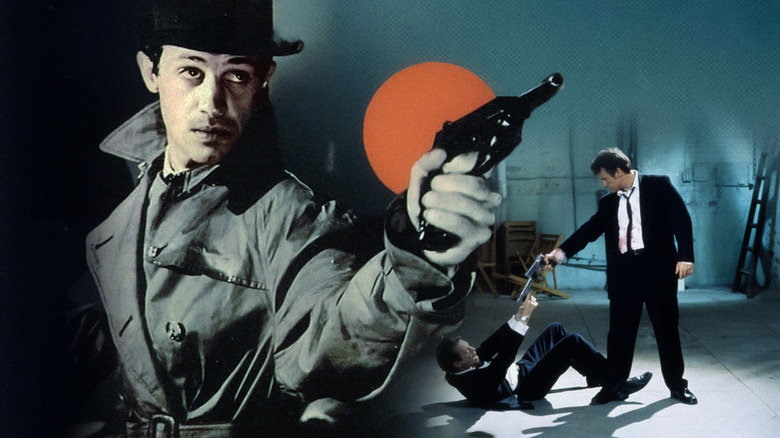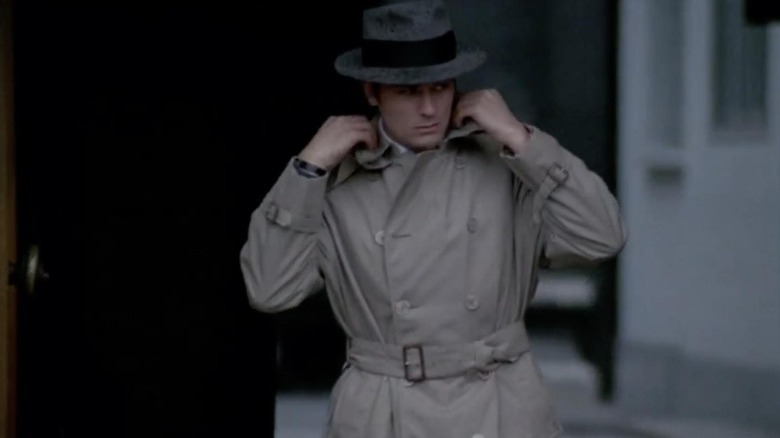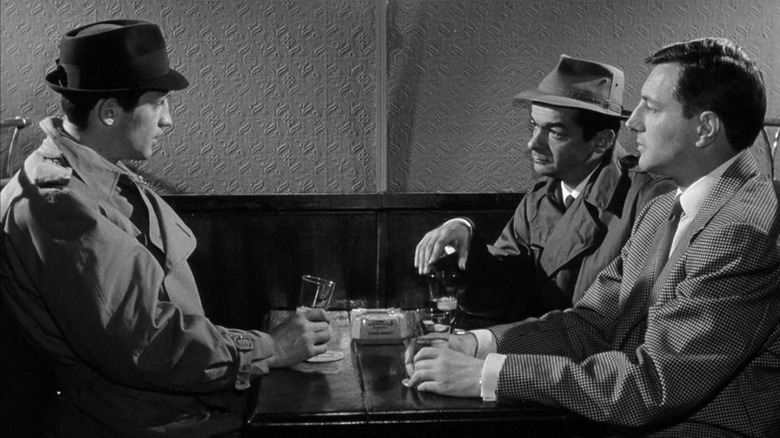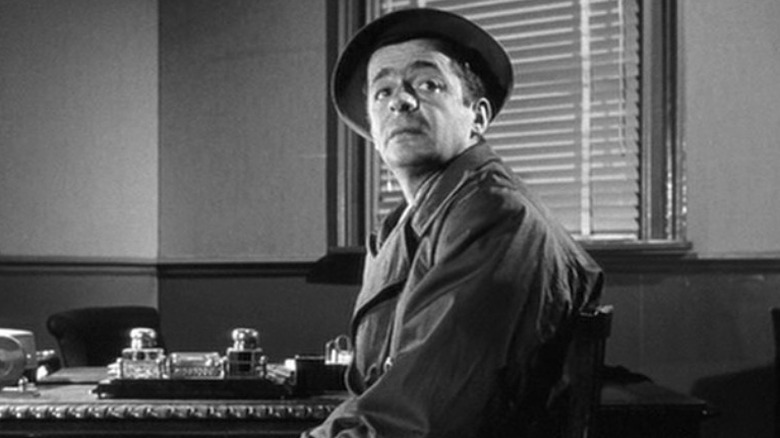The French Neo-Noir Classic That Inspired Reservoir Dogs

Whether it's disreputable exploitation films or Western TV shows or classic Hollywood, Quentin Tarantino's filmography is littered with tributes. His movies traffic in allusions and references and shots and scenes mainlined directly from the whole of cinematic history. That goes back to his first feature (which he's even thought about remaking), "Reservoir Dogs," which drew liberally from gangster movies for its taut, nonlinear telling of a heist gone wrong. For Tarantino, his primary influence was in the work of French neo-noir filmmaker Jean-Pierre Melville, specifically his 1962 film, "Le Doulos."
When he was on the press trail for 1994's "Pulp Fiction," quickly rising to become a household name as an American filmmaker, Tarantino's playful sense of homage became a target. The criticism was particularly focused on the question of plagiarism, on whether or not all of his borrowed imagery was in fact the sign of a hack. Some critics pointed to "Reservoir Dogs'" similarity to Ringo Lam's "City on Fire," a 1987 Hong Kong crime thriller about, of course, a heist gone wrong. But Tarantino was adamant that it was an homage to Melville. Indeed, "Le Doulos" had a tagline that could be applied to both movies: "You have to choose. Die ... or lie?"
Two Directors

Tarantino's origin story is fairly well-known at this point: a latchkey kid of the '70's who watched everything he could, ended up working at a video store, and (with a couple of lucky breaks) eventually realized his dream of writing and directing movies. Melville, on the other hand, bore some resemblance to a Tarantino character. An aspiring filmmaker who joined the French Resistance in the 1940s to fight Nazis, he followed the war with independent productions.
Melville had to work on a tight budget, as with his first feature film, "Le Silence de la mer." Based on the book by (and largely shot in the house of) Jean Bruller, it was one of a handful of Melville movies that dealt directly with the tension of the German occupation. Besides the stories he chose to tell, the wartime experiences of Melville's youth also colored his directorial style, which was terse, serious, and often quiet. His dedication to the work and instinct for location photography made its way into all of his films, regardless of if they were about the war.
He would become best known in America for a series of extremely heightened urban crime thrillers that he made in the 1960's. Much like Tarantino, his influences drew from a kind of low culture, directly referencing the Depression-era Warner Bros. gangster movies he grew up watching. He ended up influential as well; beyond Tarantino, his work was cited by Michael Mann, John Woo, and even "City on Fire's" Ringo Lam.
How Melville's Aesthetics Drove The Story

Movies like "Le Samouraï" took the familiar iconography of the American gangster - the big fedoras, the cigarettes, the raincoats - and pared down the story to the point where dialogue was irrelevant, and often unused. The work of the protagonists was existential, necessary, and cut through the complexity of the plot. His friend and contemporary Bertrand Tavernier would say of these movies that "Melville managed to unify his sources of inspiration, to rid them of any superfluous elements."
Given Tarantino's love for superfluous elements and complex dialogue, it may be hard to spot the influence. They share a willingness to deal in big tributes to the imagery they love. When, in "Le Doulos," Maurice (Serge Reggiani) is walking along the street underneath the movie's opening credits, one can see the seeds of "Reservoir Dogs'" iconic ensemble march set to "Little Green Bag." When "Le Doulos" explains the term's double meaning (a hat; an informant), it feels more than a bit like "Pulp Fiction's" opening card.
Maurice is out of jail, 6 years after getting caught during a heist, and planning another one with Silien (Jean-Paul Belmondo). Loyalties are questioned, and the body count begins to pile up once the police get involved, leading to a disastrous shootout. Silien wants out of crime. He calls police inspectors and beats Maurice's girlfriend for information. He is obviously the informant. Or is he? Like "Reservoir Dogs," you have time to come to your own conclusions.
A Lesson In Plotting

"Le Doulos" plays with expectations masterfully. It never gives a viewer more than they need to know - the oblique dialogue and spare compositions are perfectly orchestrated to develop intrigue, to lead from one betrayal to the next. While you're caught up in the hypnotic mood and the mundane tasks, the movie is setting up a line of dominos to fall in its final moments. Like "Reservoir Dogs," the nature of the heist doesn't really matter, and the movie isn't predicated on whether or not a good character gets the diamonds. They both end in a cascade of bloodshed.
Even though he cares less about Melville's structural perfection, Tarantino's movies also work delicately towards payoffs. Melville had tense silences where nothing seems to happen, while Tarantino uses narrative tangents with their own episodic structure, and in both cases you wonder what the endgame is, before the movie's finale inevitably ties together the various pieces into something uniquely satisfying. Talking about Melville's influence with Film Comment in 1994, Tarantino said something similar about his first viewing of "Le Doulos." "That's the joy of it — I've had faith in this movie all this time and I had no idea my faith was gonna be paid back so well."
Read this next: The 14 Best Noir Movies Ranked
The post The French Neo-Noir Classic that Inspired Reservoir Dogs appeared first on /Film.
from /Film https://ift.tt/kIy6ZRE
No comments: